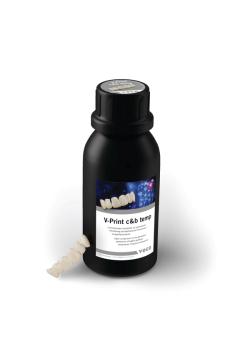Despite the incredible number of continuing education courses so heavily focused on implants, sleep dentistry, TMJ, cosmetics, and other exciting topics claiming to transform your professional life, for the vast majority of dentists, 1 simple fact remains: We still do a lot of fillings.
And to many of us, fillings are stressful.
They are stressful for a variety of reasons:
- If you don’t pack well, you could form a void.
- If your increment is too large, you could fail to cure to the appropriate depth.
- If your bond is contaminated, you’ll end up with an ugly brown line at the margin.
- If your prep is too deep, you may fail to cure all of the composite, as some may be hiding under a wall of tooth structure.
- Every time you cure with a curing light, the material shrinks away from the margin.
- If you do all of the above perfectly, the patient may still experience sensitivity.
All of this, combined with the fact that fillings are less profitable, makes class IIs and buildups potentially the least exciting part of our professions.
Sadly, they aren’t going anywhere.
For larger fillings and buildups, the concept of bulk-fill products is nothing new. The possibility of placing a large amount of flowable restorative material in 1 increment seems incredibly tantalizing, but many previous bulk-fill products have underperformed, as 2 problems became readily apparent. First, because of the unavoidable characteristic of any light-cured restorative product to shrink, these large restorations often display much higher-than-average overall shrinkage, creating poor marginal integrity, especially at a magnified level. This occasionally results in the dreaded “It wasn’t bothering me until you worked on it” scenario. Second, because these products were designed to fill deep preparations, clinical confidence in depth of cure has never been as consistent as it would be with shallower incremental composite placement. This is notably relevant with core buildups, as, especially with endodontic buildups, we have to contend with incredibly deep walls surrounding the deepest part of the prep or access.
SDI, a well-known and well-respected manufacturer of specialist dental materials since 1972, has recently introduced an innovative restorative product that aims to provide a better solution to the limitations in bulk-fill products.
Stela self-cure composite behaves like a highly filled flowable, made obvious by its opacity in radiographs and resistance to wear.
“Stela is an innovative high-performance self-cure composite. Stela offers an unlimited depth of cure and low-stress polymerization with a gap-free interface. There is no need to acid etch or light cure,” according to SDI’s website.
The SDI description continues, “Stela achieves its groundbreaking properties through a tailored combination of BPA [bisphenol A]–free resin monomers, optimized ionglass™ fillers (SDI’s bioactive proprietary hybrid glass), and specially surface-modified inorganic fillers. Stela’s outstanding mechanical properties come from a rapid curing reaction. The Stela monomers form polymeric chains and, simultaneously, these chains are rapidly and densely cross-linked to each other, forming a complex web that strongly binds the ionglass™ filler and the amorphous silica, resulting in a strong and resilient restorative material.
“The Stela snap set fast cure is due to an innovative hydroperoxide-based initiation system that is free of tertiary amine. This ensures fast-setting characteristics, good color stability, and an excellent conversion rate.
“Once cured, Stela’s matrix delivers consistent and reliable strength and durability for all restorations. The simple 2-step process minimizes operator errors and patient sensitivity with no etch or curing lights required. Stela is the solution for all your clinical needs.”
The syringe includes a small mixing tip, allowing the base and catalyst to mix just prior to placement in the preparation. Then, because of a special proprietary primer, which serves to replace traditional bonding steps, contact between the flowable restorative material and the primer immediately catalyzes polymerization originating at the deepest point of contact between material and primer, resulting in exceptional marginal integrity. This characteristic nearly eliminates the fear regarding whether a clinician’s curing light was able to cure to reach the needed depth, as the material will still cure and fully harden even in areas where traditional light curing is unable to penetrate.
More impressive is Stela’s track record regarding marginal leakage. This again is a major limitation seen in most bulk-fill products. Here Stela impresses, showing marginal shrinkage rates similar to and sometimes better than incremental composite fills.
There are many indications for utilizing Stela within our daily operative procedures. One such indication is for the temporization of hypersensitive fractured teeth. A Stela filling can be placed in 5 minutes without the need for water rinsing, thus providing a comfortable patient experience. Stela also works well as a bulk-fill restorative material in deep class I posterior restorations. Since the material requires no light polymerization, using Stela reduces the risk of gap formation caused by incomplete resin polymerization. Thus, Stela restorations result in less postoperative sensitivity than traditional composite restorations.
Stela can be used as a core buildup material in both vital and nonvital teeth. It is particularly useful for teeth with little remaining enamel, as Stela can successfully bond to dentin. Stela also exhibits superb masking properties when used as a core material for a prefabricated metal post, thus limiting the need for opaquing agents. Using Stela also helps save time when performing multiple posts and cores, as light curing is not necessary.
As mentioned earlier, this product also comes with its own bonding agent, a self-etch primer, thus eliminating the need for standard etch and bond techniques.
Members of the Catapult Education product review board were given the opportunity to test the SDI Stela product in their own clinical environments. After a period of evaluation, using the product in various restorative scenarios, these clinicians were asked to complete a survey about their experience using this product. Below are several comments that were made by various clinicians throughout the evaluation period:
“This material has multiple uses.”
“Within the world of dual paste, bulk-fill composites with the added benefit of some unmatched marginal integrity, this is a great option.”
“Excellent product in the correct application.”
“In a case of a large posterior deep restoration approximating the pulp where curing is not possible. Gives the ability to use a metal matrix and not worry about curing through a mylar band.”
“Less technique-sensitive steps, which is important in difficult situations and is timely. The 4-minute set time is nice to give patient a rest but gives back a lot of the time gained from doing fewer steps.”
“I like the BPA-free feature. More and more patients are asking about that.”
Simply put, there are not very many bulk-fill flowable materials that are BPA free and provide an unlimited depth of cure. Despite this, almost every dentist would have to admit that there are clinical situations in which such a product would be exactly what we need. Stela exhibits the benefits of excellent flow and masking properties, smooth consistency, fewer procedural steps, lower patient postoperative sensitivity, and decreased clinician eye fatigue (from absence of light curing). While several Catapult evaluators indicated a diversity in the ways that they plan to use the product, most agree on this point, and therefore, we are happy to award SDI the Catapult Vote of Confidence. Congratulations!
Clinical images courtesy of Kathryn Cole, DMD.

 Download Issue: Dental Products Report February 2024
Download Issue: Dental Products Report February 2024

